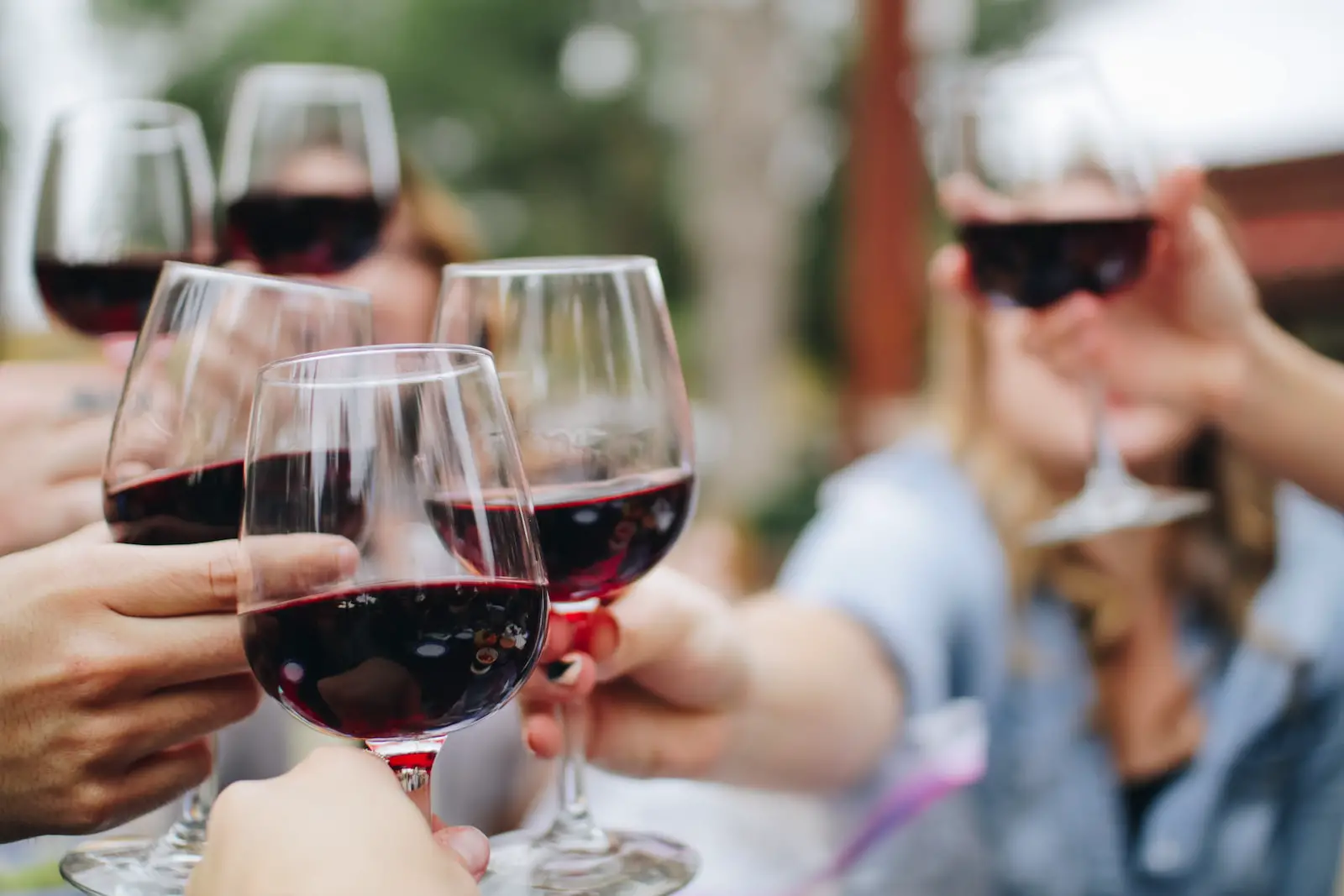
Many years ago, I stumbled into wine by setting up a tasting group with my friends. About eight of us met once a month over the course of a year exploring wines from around the world. I learned more in that year about wine than I ever thought I would, and my curiosity turned into a passion.
Start your wine club off right by deciding what the purpose of your club is and then who will be in your group. Decide on a theme for each event, and choose how you’ll taste the wines. A wine tasting club is an ingenious way to learn about wine and share the cost of buying new wines, so you’ll be able to taste more.
Starting a Wine Tasting Club
You’re going to need to make several decisions before starting your wine tasting club and hosting your first event. Here’s what you need to know to get started.
1. What Is the Wine Club’s Purpose?
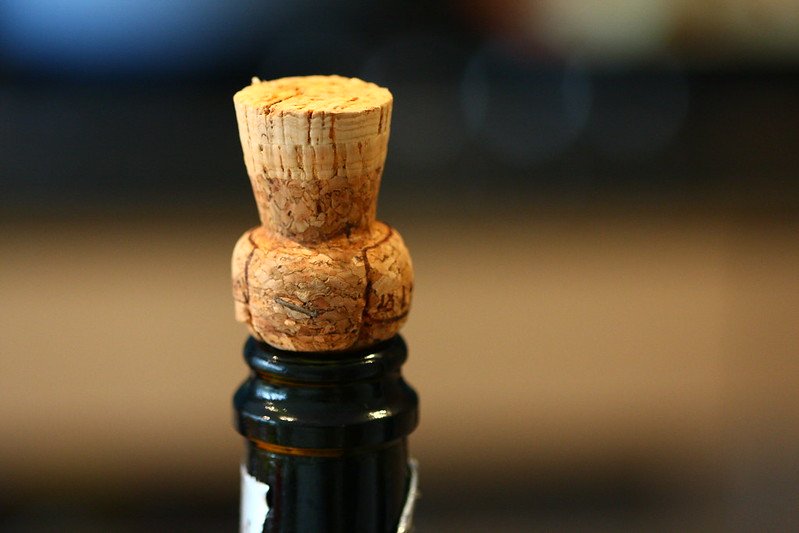
Before you get started with your wine club, you want to have a clear idea of your end goal.
- Is it to learn more about the basics of wine?
- Or is it to explore wines from around the world?
- Or are you looking at learning how to pair wines with food?
There are so many different reasons for creating a new wine tasting group.
For me, I wanted to learn more about different wine varietals, like Merlot, Cabernet Sauvignon, Chardonnay, and Pinot Noir.
I had a general idea of what each wine was like, but I couldn’t tell you exactly with any confidence the differences between them.
Did I really like Cabernet Sauvignon more than Pinot Noir? No idea. And if I was going to be making a barbecue, what wine would I pair with that? Hmm… no clue.
So, I started a wine tasting club.
My tasting group focused on exploring one varietal every month. For example…
August would be Pinot Noir month. We would only taste bottles of Pinot Noir at that meeting. September was Malbec month. We all brought bottles of Malbec and tasted the night away.
You have many options but decide on the main purpose and what will work for you.
2. Who is going to be in the group?
The next step is to decide on the wine tasting club membership. If you have a close group of friends, this is an ideal place to start.
If you’re looking to open up the group to a wider audience, consider creating a meetup, or even connecting with a formal chapter, like the American Wine Society.
3. How many people will be in the tasting group?
Keep in mind that your purpose should drive your membership.
If you’re looking to have a social occasion with friends, then the more the merrier, and a larger tasting group may be more appropriate.
However, if you’re looking for an education-focused tasting group, you may want to limit the number of members.
In my experience, I found that the tasting group functioned best at around 5 to 6 people.
More than that, and it became a drinking party instead of a tasting club. But social occasions are wonderful and it is wine, the ultimate social lubricant, so whatever works for you and your group.
4. Appoint an Organizer
You will need to have a point person lead the group. This may be you because you’re reading this article.
However, it may be another member of the group who has strong organizational skills.
This individual is going to be critical to helping the success of your group.
Your organizer may end up being responsible for some or all of the following tasks:
- Coordinating meeting dates
- Coordinating meeting times
- Coordinating meeting locations
- Purchasing wine/delegating the purchase of wine
- Organizing reminders
- Coordinating food/snacks
- Coordinating any printed materials
- Coordinating the tasting theme
If you end up having a very large group, for example, 20 to 30 people, you will want to have one or two co-organizers help you in managing the workload.
5. Make a Wine Plan

Finally, it’s time to talk wine. Each time the group meets, you will need to have a tasting plan or theme. This is a plan for the wines you’re going to be tasting during the meeting.
You have several options.
Here’s a list of common wine tasting themes.
- Compares wines from a specific winegrowing region
- Compare wines from the same producer but different vintages (years)
- Compare wines from the same grape, but in different regions (Chilean vs. Napa Cabernet Sauvignon)
- Try wines from different regions in the same country
- Try from the same grape, the same region, and year, but different producers
- Any of the above, but at a certain price point ($5-$10, $10-$15, $15-$25, $25-$35, etc.)
- Wines from the same grape at different price points
- Natural wines
- Sparkling wines from different regions
- Fortified wines
- Dessert wines
6. Set the Price Point
Wine can be an expensive product. It’s bulky. It breaks. It’s heavy to ship. Don’t get me started on import levies.
You want to be clear about your price range for bottles ahead of time. This will help your club members know what to expect.
You may be an exclusive wine tasting club focused on $100 Cabernets for example, or you may be a bargain group looking to find that treasure in the $10 bin in the discount grocery store.
You get to choose. You can do both – it’s not either-or. It’s wine. It’s meant to be fun.
7. Decide How to Pay for the Wine

Related to price, you will need to decide how to physically pay for and get the wine. Your members can bring a bottle, or you can decide who’s going to be responsible for purchasing the wine for your tasting each time.
You may want to pool money ahead of the tasting so that one person can purchase the wine.
This strategy may end up being the best method if you’re looking for wine at a specialty wine shop, or if you know that you will need to purchase the wine online from an online wine retailer.
In my wine tasting group, each person had to go and find a wine that was labeled with the particular varietal for that month’s themed tasting. This was a clever way to have everyone participate in selecting the wine.
You never know where they were going to go shopping for their bottles.
It could have been the local grocery store, or it could have been the specialty wine shop. It was always a surprise. And we all loved it.
Personal Note: At this point in my wine life, the closest wine specialty shop is about 2 hours away. When I plan a niche tasting, you better believe that I’m coordinating logistics on how to physically pick up the bottles.
8. Make a Food Plan
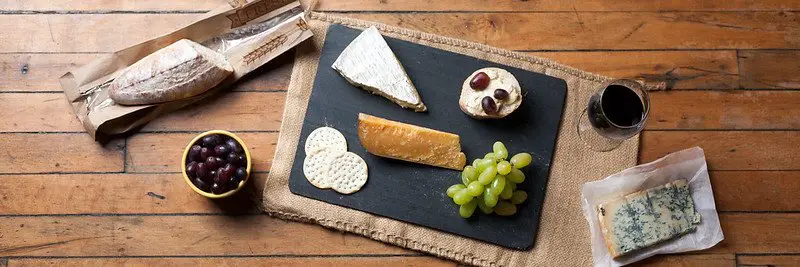
Because it’s wine, you’re going to want to have some kind of food to go along with your tasting event. This could be as simple as a cheese plate with some crackers, or as elaborate as a full-course dinner.
You get to choose depending on your group size, tasting focus, and tasting purpose.
If you are only tasting a few wines each meeting, an uncomplicated cheese tray with a few crackers may be sufficient.
If you’re tasting several wines, you may want some water crackers, olives, rare roast beef, and baguettes to help your members cleanse their pallets.
If your tasting group is focused on learning to pair wines with food, it makes sense to include food as a central part of your tasting group’s event, and you will want to research wine and food pairing ahead of time.
Helpful Tip: Here’s a list of appetizers for white wine, and one for red wine.
9. Before the Club Event
Before the actual meeting event, send out reminders about the details for the tasting.
Include any instructions about purchasing wine, bringing food, or other details related to what each participant is expected to do.
Make sure that you have enough wine glasses for each taster.
You don’t need to have multiple glasses for each person, but it can help if you want to taste more than one wine at the same time. This is useful if you’re trying to do comparisons between wines that may have similar qualities to tease out the differences.
Based on personal experience, I don’t recommend the highest quality wine glasses for your tasting club.
Helpful Tip: Because this is an active event, tasters will be pouring wine out and maybe moving around or passing bottles to fill up their glasses. This level of activity can and will lead to broken glasses. Save your luxury stemware for another occasion. Here’s a link to my gear shop where you can see the heavier-duty glasses I use for formal tastings.
10. Print out Tasting Sheets
Print out tasting sheets, or wine tasting grids, for each of the members.
These are helpful grids that can aid tasters in identifying the different structural elements in the wine.
It’s not strictly necessary, especially if you’re gathering is less formal and more social, however, if you’re a more education-focused tasting group, then you may want to prepare by having these wine tasting sheets along with pencils or pens so that your members can take notes during the tasting.
In addition to tasting grids, you may want tasting mats. This is as simple as a white piece of paper so that you can better see the color of the wine.
What to Do During the Wine Tasting
1. Decide How You Will Taste the Wines
You have a few ways to organize your tasting depending on your goals.
My tasting group was focused on comparing varietal wines.
This meant we really wanted to understand the different varietal characteristics of a particular grape and the way that it could present itself in a range of wines. For that reason, we tasted blind.
Every person who arrived at the tasting gave me a bottle of wine, and I placed that wine in an unmarked brown paper bag with a number.
We went through the tastings for each of the bagged wines and then, at the end of the event, pulled the wines out of the bags to see how they ranked.
You don’t have to blind taste.
If you’re tasting a range of wine styles, organize the tasting around the lightest to heaviest (starting with white wines and moving to reds and ending with sweet wines -rosé in between white and red).
Helpful Tip: Here’s an exhaustive list of wines and the order you’ll want to put them in your wine tasting lineup.
If you’re tasting the wines from one producer, feel free to reach out to their sales office and tell them which wines you’re going to be tasting.
Ask them what order they recommend that you taste them in. Chances are that they will be thrilled to know that you’re tasting their wines and may even offer additional tasting notes or food pairing ideas for the wines to guide you.
2. Don’t Pour Full Glasses
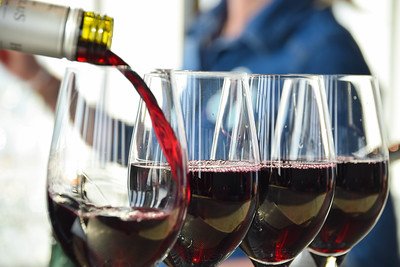
You don’t want to pour full glasses of wine. There’s no faster way to get tipsy than at a wine tasting with heavy pours and it quickly goes from wine tasting to wine guzzling.
Instead, only pour about 2 oz (about half of the pinky’s depth) worth of wine into each wine glass.
3. Have a Place to Pour Unwanted Wine
You will taste wines that you don’t like, or your guests won’t like. You need to have a place to dump unwanted wine. Choose an opaque container, like a large pitcher or crock, to be able to dump wines as you taste.
Likewise, if you’re tasting more than 3-4 wines, you’re going to spit out wine, so get some spit cups for your club.
You can’t (and probably won’t want to) swallow everything.
The best and easiest way to deal with this is to use disposable paper cups.
Each person gets their own spit cup, and at the end of the evening, they can dump it in the sink or out the back door, and toss the cup into the garbage.
4. Vote on Your Favorite Wine
Everyone has their own taste preferences. This is one of the things that makes exploring wine so fascinating.
What you love, your neighbor may hate and vice versa. Most tasting groups will have individual members rank their preferences from most to least favorite.
You can add up the scores for the best of show. If you had someone bring the wine, this person’s the winner. What’s the prize? Here are a few options:
- Pick out the next meeting’s theme
- Take home the leftovers of their favorite bottle of wine
In my experience, the best of show wine rarely had any leftovers. But when we had eight or nine bottles of wine total, there was often a surplus of wine leftover that no one person could drink alone.
Each member was able to select a bottle to take home with them.
5. Planning Your Next Meet-up
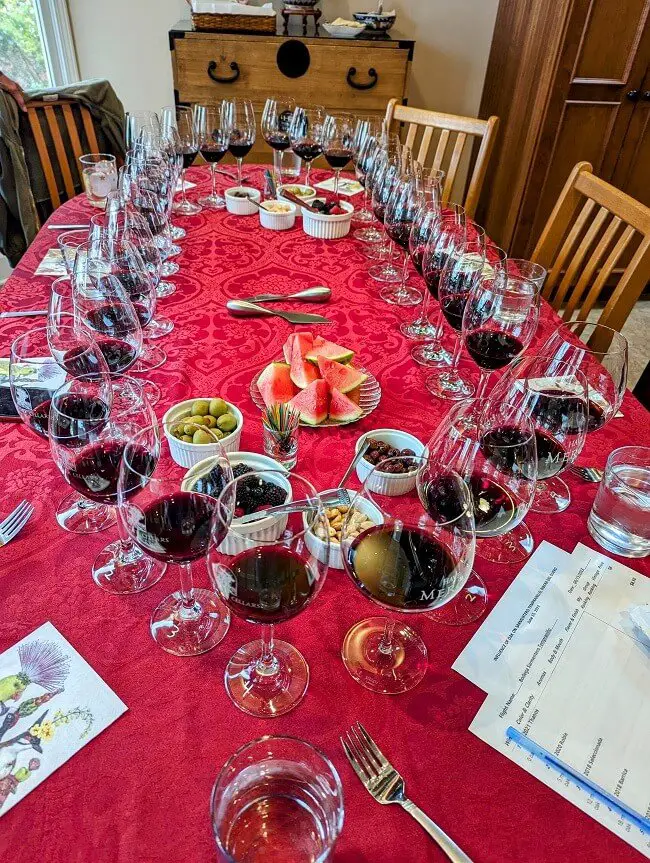
Before the group leaves the event, let them know what the plan is for next time – even if you don’t know what the plan is.
Your group may be uber-organized and have a schedule of events lined up for the next year. Or you be winging it.
I set a standing meeting on the last Friday of the month – a ‘We’ve Made It!’ celebration. Figure out your schedule and you’ll soon have members eagerly anticipating each gathering.
Don’t limit your group to monthly meetings.
Once you’ve got your wine tasting club started, think about hosting a holiday event, a seasonal event, or even a field trip.
These can include things like harvest dinners, meeting local winemakers, or coordinating with a local restaurant and sommelier to host a dinner party.
There are so many options in the world of wine once you find your people.
Final Thoughts – Starting a Wine Tasting Group
Starting a wine tasting club or a tasting group is a brilliant way to explore the world of wine, but also save money by sharing the cost of wine bottles. With a little planning, you’ll quickly be on your way to learning all about the fermented grape.
Drink well and stay thirsty.
Thirsty for More?
Check out how to put together a DIY wine tasting here with recommended tasting flights to get you started.
And here’s a fun post on how to set up a blind wine tasting at home, also good stuff.



